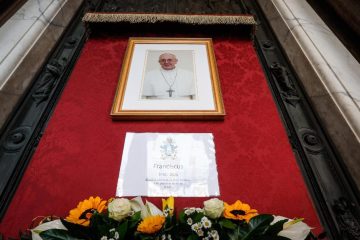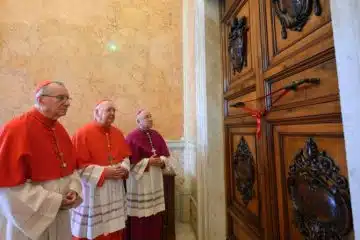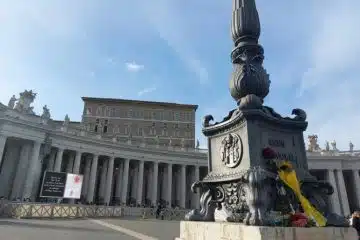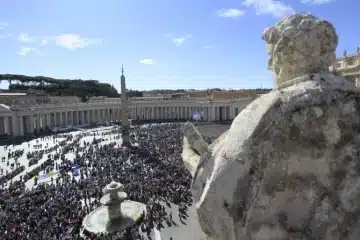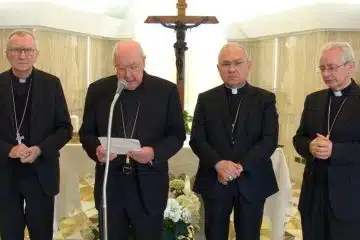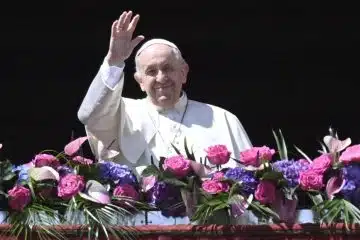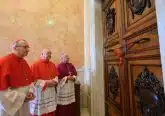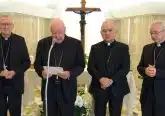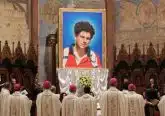Not a Roman holiday: Pilgrims learn lessons walking to Rome

IMAGE: CNS/Robert Duncan
By Matthew Fowler and Robert Duncan
VATICAN CITY (CNS) — After weeks of navigating difficult terrain, avoiding wild animals and steep cliffs, the devoted pilgrims and hiking enthusiasts who manage to traverse the 155 miles between Assisi and Rome on foot arrive in St. Peter’s Basilica and report a special kind of payoff.
“It’s very moving when you get there and walk through the doors of St. Peter’s,” said Bret Thoman, director of St. Francis Pilgrimages. “It’s almost like walking from the world into heaven.”
The Way of St. Francis is a network of walking trails that connects Assisi to Rome. Created 15 years ago by the government of Italy’s Umbria province, it attempts to mirror the path likely trod by St. Francis of Assisi when he went to Rome to meet Pope Innocent III in 1209. The actual historic route remains unknown.
“When you arrive (at St. Peter’s), you’re usually kind of beat up. You have blisters, your legs are sore, your feet are sore, your joints are sore,” Thoman said, but still the pilgrims are grateful for the hard lessons learned along the way.
Deacon Terrance Marcell, a 79-year-old serving at Holy Rosary Parish in Edmonds, Washington, said the challenge of walking the “cammino” — as it is called in Italian — gave him a renewed sense of what is truly important in life.
“I’m not going to worry about my golf score anymore like I did,” he said just before finishing his pilgrimage in late October. “I can think back and realize that I need a little bit more patience with people, with my family.”
Pilgrims encounter true wilderness on the trail to the Rome, and Thoman said he prepares them for encounters with the dogs, wild boar, snakes and other creatures that inhabit the Italian forests.
“It’s a real-life journey out in nature,” said Thoman, who has been organizing Catholic tours of Italy with his wife for the past 15 years.
To keep on schedule, pilgrims walk between nine and 12 miles daily, stopping only to eat and sleep. Many of the pilgrims Thoman leads opt to stay in hotels, since, he says, “after a hard day’s hiking most pilgrims have had enough penance.”
Marcell said that encountering quaint scenes of rural Italian Catholic life summoned vivid memories of his youth.
“The icons, the little churches and the sanctuaries have brought an image and have reminded me of my roots as a child,” he said.
Father Vincent Gilmore, the pastor of Holy Rosary Parish, said that punctuating each day of hiking with the celebration of Mass helped him feel connected to the saints who had taken similar paths throughout history.
“For me, it’s a way of joining heaven and earth while I am walking,” Father Gilmore said. “In the Eucharist, there is no time, you enter the space of God, which is really outside of time,” and therefore it brings together “all the people who have walked these lands in the present.”
“Walking the cammino is a rhythm and a silence that puts things into perspective,” said Father Gilmore. “We mature along the way, we gain more wisdom and a greater sense of God and his providence.”
– – –
Copyright © 2017 Catholic News Service/U.S. Conference of Catholic Bishops. www.catholicnews.com. All rights reserved. Republishing or redistributing of CNS content, including by framing or similar means without prior permission, is prohibited. You may link to stories on our public site. This copy is for your personal, non-commercial use only. To request permission for republishing or redistributing of CNS content, please contact permissions at [email protected].


